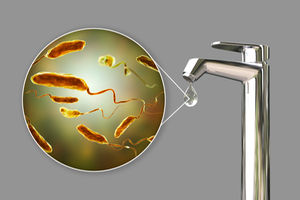Cholera outbreak: Cases near 100 as disease spreads in Kenya

Kenya has so far recorded 100 cases cholera in the latest outbreak.
Cases of the cholera outbreak in Nairobi, Migori and Kisumu counties have risen to 97 from 69, with six reported fatalities.
The Ministry of Health (MOH) said in a statement on Tuesday that Kisumu County had recorded four deaths, with Nairobi and Migori counties recording one death each.
“In Kisumu County, 32 cases and four deaths have been reported. Affected sub-counties include Nyando and Muhoroni. In Migori County, 53 cases and one death have been reported. Affected sub-counties include Suna East, Suna West, Kuria East, and Kuria West. Most patients have recovered, while two remain hospitalised. In Nairobi County, 12 cases and one death have been reported. Affected sub-counties include Kasarani, Embakasi East, Embakasi Central, Roysambu, Kibra, and Dagoretti South,” said the statement.
The Ministry of Health said it’s working closely with County Governments to deal with the outbreak.
It has rolled out a series of targeted interventions to address the ongoing public health situation.
A key component of the response has been enhanced surveillance efforts, including active case searching, meticulous contact tracing, and rapid deployment of response teams at the national and county levels.
These measures aim to quickly identify and contain any new cases, thereby limiting the spread of disease.
In addition, the Ministry has prioritised the training and sensitisation of healthcare workers nationwide.
These trainings focus on strengthening the capacity of medical personnel in areas such as disease surveillance, clinical case management, water and sanitation practices, and effective risk communication.
The response teams are better prepared to manage the outbreak and educate communities on preventive practices by equipping frontline workers with the necessary knowledge and tools.
Efforts have also been made to engage and inform the public through robust risk communication and community outreach.
This includes disseminating accurate information through community health promoters, administrative officers, media outlets, and distributing educational materials and videos.
Furthermore, field investigations have revealed widespread consumption of untreated water, prompting the implementation of urgent water hygiene and sanitation measures.
These include household water treatment initiatives, stricter hygiene enforcement, and food safety campaigns. Simultaneously, suspected cases are being tested, confirmed patients are being treated, and prophylactic measures are offered to close contacts to ensure comprehensive case management.
To protect public health and prevent the spread of disease, the MOH has urged Kenyans to wash their hands frequently using soap and clean water, particularly after using the toilet, before eating or preparing meals, and after caring for someone who is ill. The MOH has also urged installation of accessible handwashing stations in public areas, and ensure that they are equipped with clean water and soap, or hand sanitisers containing at least 60 per cent alcohol to ensure effectiveness.
Drink only clean water (boiled or chlorinated), avoid untreated water from open sources like rivers and lakes, store water in clean, covered containers and dispose of waste properly to avoid water contamination. Also avoid open defecation and maintain clean, functional latrines, and regularly disinfect surfaces, especially those used for food preparation. Wash hands and sanitise surfaces and utensils before preparing food,” said MOH statement.
The MOH notes that “Cholera is a highly infectious waterborne disease caused by a bacteria known as Vibrio cholera, contracted through consuming food or water contaminated with the bacteria.”
Symptoms include sudden onset of severe watery diarrhea, vomiting, muscle cramps, and severe dehydration, often appearing within two hours to five days after infection. Cholera is a serious disease that can lead to rapid dehydration and potentially death if left untreated. Prompt medical attention is therefore important for persons suspected to be infected with cholera.
Major Cholera Outbreaks in Recent Years:
2017: Severe outbreak affecting multiple counties, with over 1,000 cases reported
2019: Significant outbreak in coastal regions, particularly Mombasa and Kilifi
2021: Outbreak in arid and semi-arid regions, linked to drought conditions
Note: Historical data aggregated from multiple official public health sources. Specific numbers are approximate and based on multi-year epidemiological tracking.
Data Source: World Health Organization (WHO) Kenya Country Reports, Kenya Ministry of Health Annual Health Sector Reports, and Centers for Disease Control and Prevention (CDC) Regional Epidemiological Tracking


